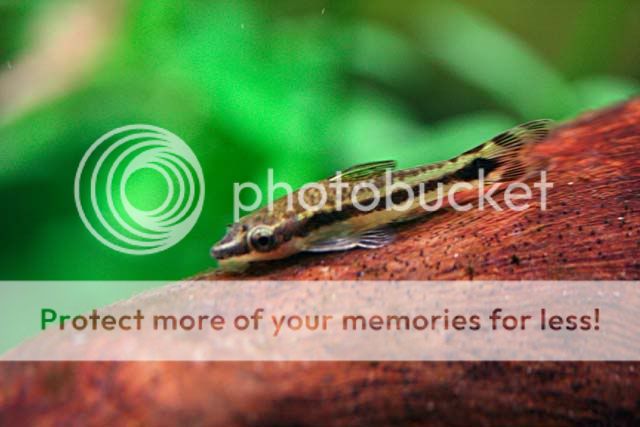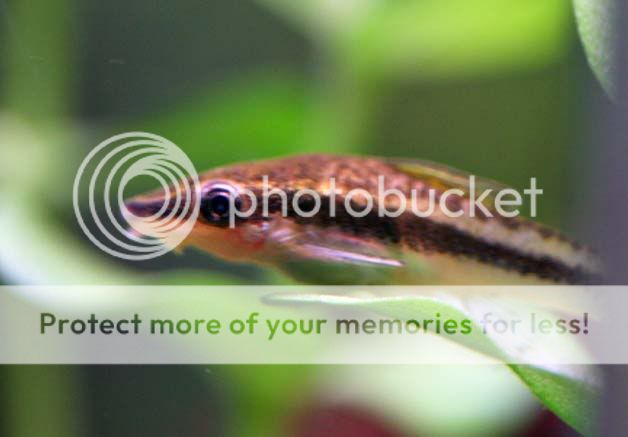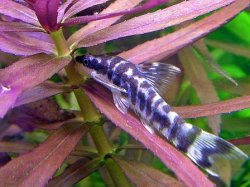Auratus
Why am I browsing a fish forum at 2am?
Common name: Oto, Otto, Otocinclus
Scientific name: Otocinclus affinis
Origin: South America
Family: Loricariidae
Maximum size: 2 inches
Care:Needs a tank of 10 gallons minimum. Keep at temperatures of 75-79f. A peaceful community fish. An ideal algae eater for small aquariums. This catfish likes to be in groups of three or more. A nice feature about this catfish is that it is not as shy as most species. It can often be found stuck to the sides of the tank or grazing rocks and leaves during the day. Do provide a few hiding places just in case this fish feels like a little privacy. A dark colored substrate makes this cat feel more comfortable.
Feeding: Algae wafers as well as some vegetables. Loves brown algae and driftwood.
Sexing: Females are larger and rounder then males. Males have slightly longer fins which aren't really noticable at first glance.
Breeding: You need quite a few otos to get them "in the mood". They will lay eggs on rocks and leaves. Keep the water slightly softer to encourage breeding.
Comment: Be very careful when aclimating this fish and carefully monitor it's care the first 2-3 weeks. Many people have a hard time aclimating the otos and getting them to eat.
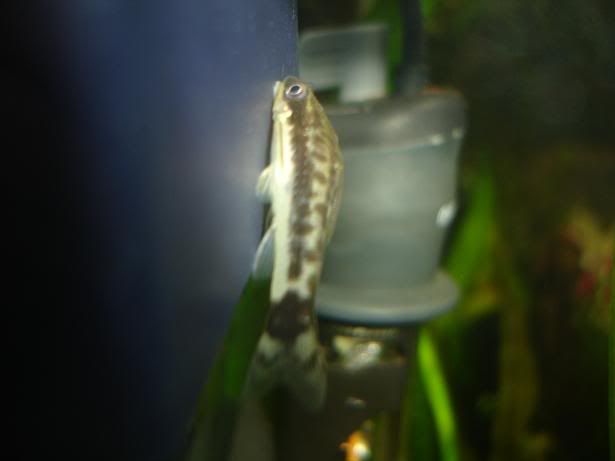
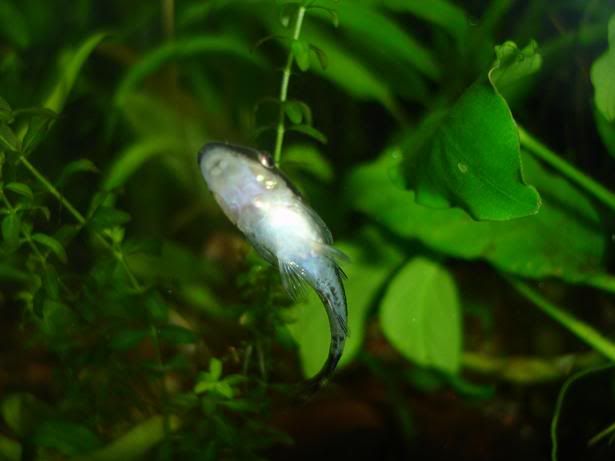
Scientific name: Otocinclus affinis
Origin: South America
Family: Loricariidae
Maximum size: 2 inches
Care:Needs a tank of 10 gallons minimum. Keep at temperatures of 75-79f. A peaceful community fish. An ideal algae eater for small aquariums. This catfish likes to be in groups of three or more. A nice feature about this catfish is that it is not as shy as most species. It can often be found stuck to the sides of the tank or grazing rocks and leaves during the day. Do provide a few hiding places just in case this fish feels like a little privacy. A dark colored substrate makes this cat feel more comfortable.
Feeding: Algae wafers as well as some vegetables. Loves brown algae and driftwood.
Sexing: Females are larger and rounder then males. Males have slightly longer fins which aren't really noticable at first glance.
Breeding: You need quite a few otos to get them "in the mood". They will lay eggs on rocks and leaves. Keep the water slightly softer to encourage breeding.
Comment: Be very careful when aclimating this fish and carefully monitor it's care the first 2-3 weeks. Many people have a hard time aclimating the otos and getting them to eat.




